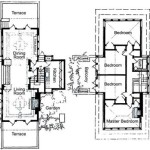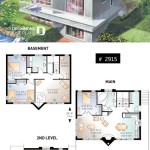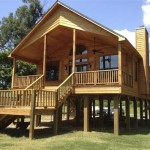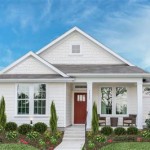A simple house plan design refers to a minimalist approach to residential architecture that focuses on functional, efficient, and cost-effective design. It prioritizes simplicity, clarity, and livability over elaborate ornamentation or complex layouts. A common example of a simple house plan design is a one-story, rectangular home with a central living area and surrounding bedrooms and bathrooms.
The appeal of simple house plan designs lies in their practicality and versatility. They are suitable for a wide range of budgets, lot sizes, and lifestyles. Moreover, their emphasis on functionality and efficient use of space makes them ideal for small homes, affordable housing, and environmentally conscious designs.
In this article, we will explore the principles, benefits, and considerations involved in creating a simple house plan design. We will discuss factors such as layout optimization, natural lighting, material selection, and the incorporation of sustainable features to help you design a home that is both beautiful and practical.
Here are 10 important points to consider when designing a simple house plan:
- Functional layout
- Efficient use of space
- Natural lighting
- Sustainable materials
- Cost-effective design
- Versatility
- Aesthetic appeal
- Indoor-outdoor connection
- Future expansion
- Local building codes
By keeping these points in mind, you can create a simple house plan design that meets your needs and preferences while maximizing functionality, comfort, and aesthetics.
Functional layout
A functional layout is the foundation of a well-designed simple house plan. It refers to the arrangement of rooms and spaces within the home to create efficient and comfortable living environments. Here are four key aspects to consider when planning a functional layout:
1. Traffic flow: The layout should allow for smooth and efficient movement throughout the home, avoiding bottlenecks or awkward transitions. Common areas, such as hallways and entryways, should beand well-lit, providing ample space for movement.
2. Room adjacencies: The placement of rooms should be carefully considered to minimize unnecessary steps and improve convenience. For example, the kitchen should be located near the dining room and outdoor grilling area, while bedrooms should be situated away from noisy areas like the living room or garage.
3. Natural lighting: Windows and skylights should be strategically placed to maximize natural light and reduce the need for artificial lighting. This can help create a more inviting and energy-efficient home.
4. Flexibility: The layout should be adaptable to changing needs and lifestyles. For example, a spare room can be designed to serve multiple purposes, such as a guest room, home office, or playroom.
By considering these aspects, you can create a functional layout that enhances the livability and comfort of your simple house plan design.
Efficient use of space
Efficient use of space is crucial in simple house plan design, as it maximizes functionality and comfort while minimizing unnecessary square footage and construction costs.
- Open floor plans: Open floor plans eliminate unnecessary walls and partitions, creating a more spacious and airy feel. They allow for better flow of natural light and provide greater flexibility in furniture arrangement.
- Multi-purpose rooms: Designing rooms to serve multiple functions can save space and increase versatility. For example, a spare bedroom can double as a guest room and home office, while a living room can incorporate a dining area.
- Built-in storage: Built-in storage solutions, such as shelves, cabinets, and drawers, can maximize vertical space and keep clutter off the floor. They can be incorporated into walls, under stairs, or in awkward corners to make the most of every available space.
- Smart furniture: Choosing furniture that serves multiple purposes or can be easily stored away can save space and increase functionality. For example, a coffee table with built-in storage or a sofa bed can provide extra seating and sleeping arrangements without taking up additional space.
By implementing these space-saving techniques, you can create a simple house plan design that feels both spacious and comfortable, without compromising on functionality or style.
Natural lighting
Incorporating natural lighting into a simple house plan design is essential for creating a bright, inviting, and energy-efficient home. Natural light can reduce the need for artificial lighting, improve mood and well-being, and provide a connection to the outdoors.
- Windows and skylights: Strategically placed windows and skylights can maximize natural light throughout the home. South-facing windows allow for the most sunlight, while skylights can bring light into interior spaces that lack windows.
- Window orientation: Consider the orientation of your home on the lot to optimize natural light. Placing large windows on the south side will allow for maximum sunlight during the day.
- Window size and placement: The size and placement of windows can significantly impact the amount of natural light in a room. Larger windows and windows placed at higher elevations will allow more light to enter.
- Reflective surfaces: Using reflective surfaces, such as light-colored walls and mirrors, can help bounce natural light around a room, making it feel brighter and more spacious.
By incorporating these natural lighting techniques into your simple house plan design, you can create a home that is both beautiful and energy-efficient, with an abundance of natural light to enhance your daily living experience.
Sustainable materials
Incorporating sustainable materials into your simple house plan design is essential for reducing the environmental impact of your home and promoting a healthier living environment.
- Recycled and reclaimed materials: Using recycled and reclaimed materials, such as reclaimed wood or recycled glass, can significantly reduce the embodied energy and environmental impact of your home. These materials often have a unique character and can add a touch of rustic charm to your design.
- Natural and renewable materials: Natural and renewable materials, such as bamboo, cork, and wool, are sustainable and biodegradable alternatives to traditional building materials. They can help improve indoor air quality and create a healthier living environment.
- Low-VOC materials: Low-VOC (volatile organic compound) materials, such as paints, finishes, and adhesives, emit minimal harmful chemicals into the air. This can help reduce indoor air pollution and improve the overall health and well-being of your family.
- Energy-efficient materials: Energy-efficient materials, such as insulated windows and doors, can help reduce energy consumption and lower your utility bills. They can also improve thermal comfort and reduce noise pollution.
By choosing sustainable materials for your simple house plan design, you can create a home that is not only beautiful and functional but also environmentally responsible and healthy for your family.
Cost-effective design
Cost-effective design is a crucial aspect of simple house plan design, as it allows you to create a beautiful and functional home without breaking the bank. By implementing the following strategies, you can significantly reduce the construction and maintenance costs of your home:
- Efficient design: Designing a simple and efficient floor plan can save on materials and construction costs. Avoid complex layouts, unnecessary walls, and excessive square footage.
- Smart material choices: Choosing affordable and durable materials can help reduce construction costs. Consider using materials like vinyl flooring, laminate countertops, and energy-efficient windows.
- DIY projects: Tackling some construction tasks yourself, such as painting, assembling furniture, and landscaping, can save on labor costs.
- Long-term savings: Investing in energy-efficient appliances, insulation, and sustainable materials can lead to long-term savings on utility bills and maintenance costs.
By incorporating these cost-effective design strategies into your simple house plan, you can create a beautiful and functional home that fits your budget and lifestyle.
Versatility
Versatility in simple house plan design refers to the ability of a home to adapt to changing needs and lifestyles over time. A well-designed simple house plan can accommodate various uses and configurations, making it suitable for a wide range of occupants and evolving family dynamics.
- Flexible layouts: Open floor plans and multi-purpose rooms allow for easy reconfiguration of spaces to accommodate different activities and needs. For example, a spare room can be used as a guest room, home office, or playroom, depending on the current requirements.
- Expandable designs: Simple house plans can be designed with future expansion in mind. This can involve incorporating unfinished spaces or designing the home in a way that allows for seamless additions, such as an extra bedroom or a larger kitchen.
- Adaptable spaces: Built-in storage solutions and convertible furniture can help maximize space and adapt rooms to different uses. For example, a Murphy bed can provide a sleeping area in a multi-purpose room, while built-in shelves can double as room dividers.
- Universal design principles: Incorporating universal design principles, such as wider doorways and accessible features, can make the home suitable for people of all ages and abilities, enhancing its long-term versatility.
By designing a versatile simple house plan, you can create a home that can grow and adapt alongside your needs, providing a comfortable and functional living environment for years to come.
Aesthetic appeal
In simple house plan design, aesthetic appeal refers to the visual qualities and overall impression of the home’s exterior and interior. A well-designed simple house should be visually pleasing, harmonious, and reflective of the homeowner’s personal style and preferences.
- Clean lines and simple forms: Simple house plans often emphasize clean lines and simple forms, creating a sleek and modern look. This approach eliminates unnecessary ornamentation and focuses on the essential elements of the design.
- Natural materials and textures: Incorporating natural materials, such as wood, stone, and brick, can add warmth and character to a simple house plan. These materials can create a connection to the surrounding environment and enhance the overall aesthetic appeal.
- Color and contrast: Using a limited color palette and creating contrast through the use of different materials and textures can add visual interest to a simple house plan. Bold colors can be used as accents to highlight certain features, while neutral colors can create a calming and inviting atmosphere.
- Indoor-outdoor connection: Blurring the lines between indoor and outdoor spaces can enhance the aesthetic appeal of a simple house plan. Large windows, sliding glass doors, and outdoor living areas can bring the outside in, creating a sense of spaciousness and connection to nature.
By considering these elements of aesthetic appeal, you can create a simple house plan design that is not only functional and efficient but also visually stunning and reflective of your unique style.
Indoor-outdoor connection
Creating a seamless connection between indoor and outdoor spaces is a key aspect of simple house plan design. By blurring the lines between these two environments, you can create a home that feels more spacious, inviting, and connected to nature.
There are several ways to achieve an indoor-outdoor connection in your simple house plan:
- Large windows and sliding glass doors: Large windows and sliding glass doors allow natural light to flood into your home while providing clear views of the outdoors. This can help create a sense of spaciousness and bring the outside in.
- Outdoor living areas: Incorporating outdoor living areas, such as patios, decks, and balconies, into your house plan can extend your living space beyond the walls of your home. These areas can provide a place to relax, entertain guests, and enjoy the fresh air.
- Indoor-outdoor flow: Designing your home with indoor-outdoor flow in mind means creating a natural transition between the two spaces. This can be achieved through the use of open floor plans, retractable walls, or covered walkways.
- Natural materials and finishes: Using natural materials and finishes, such as wood, stone, and brick, can help create a cohesive look between your indoor and outdoor spaces. These materials can bring the warmth and beauty of nature into your home.
By incorporating these elements into your simple house plan design, you can create a home that is not only functional and efficient but also seamlessly connected to the outdoors, providing a more enjoyable and healthier living environment.
Future expansion
Considering future expansion when designing a simple house plan is essential for homeowners who anticipate their needs or family size growing over time. By incorporating flexibility into the design, you can create a home that can easily adapt to future changes without the need for major renovations.
- Unfinished spaces: Leaving unfinished spaces, such as an unfinished basement or attic, allows for future expansion without the immediate need to complete the entire space. These areas can be finished later as needed, providing additional living space or storage.
- Expandable designs: Designing the home with expandable elements, such as modular components or pre-engineered additions, makes it easier to add on to the house in the future. This can involve designing the foundation and roof structure to accommodate future expansion or creating a floor plan that allows for easy additions, such as an extra bedroom or a larger kitchen.
- Flexible layouts: Open floor plans and multi-purpose rooms provide flexibility for future reconfiguration of spaces. For example, a large open space can be divided into separate rooms or a spare room can be converted into an additional bedroom or home office as needed.
- Universal design principles: Incorporating universal design principles into the home’s design can make it more adaptable to different needs and abilities over time. For example, wider doorways and accessible features can accommodate wheelchairs or mobility aids, making the home suitable for aging in place or for individuals with disabilities.
By considering future expansion in your simple house plan design, you can create a home that can grow and adapt alongside your needs, providing a comfortable and functional living environment for years to come.
Local building codes
Local building codes are regulations established by municipalities or counties to ensure the safety and habitability of buildings within their jurisdiction. These codes cover various aspects of construction, including structural integrity, fire safety, energy efficiency, and accessibility. When designing a simple house plan, it is essential to adhere to the local building codes to ensure that your home meets the minimum safety and construction standards.
Building codes can vary from one location to another, so it is important to familiarize yourself with the specific codes that apply to your area. You can typically find these codes online or by contacting your local building department. Once you have obtained the relevant building codes, carefully review them to understand the requirements for your project.
Some common building code requirements that may impact your simple house plan design include:
- Setbacks: Setbacks refer to the minimum distance that your home must be set back from the property lines. These setbacks are in place to ensure proper ventilation, fire safety, and access for emergency vehicles.
- Foundation requirements: Building codes specify the minimum depth and reinforcement requirements for foundations. These requirements are based on factors such as soil conditions and the weight of the structure.
- Structural requirements: Building codes outline the minimum structural requirements for walls, roofs, and other structural components. These requirements are designed to ensure the stability and safety of the building.
- Energy efficiency standards: Many building codes include energy efficiency standards that aim to reduce energy consumption and promote sustainability. These standards may specify requirements for insulation, windows, and heating and cooling systems.
By understanding and adhering to the local building codes, you can ensure that your simple house plan design is not only aesthetically pleasing but also safe, functional, and compliant with the regulations in your area.










Related Posts








